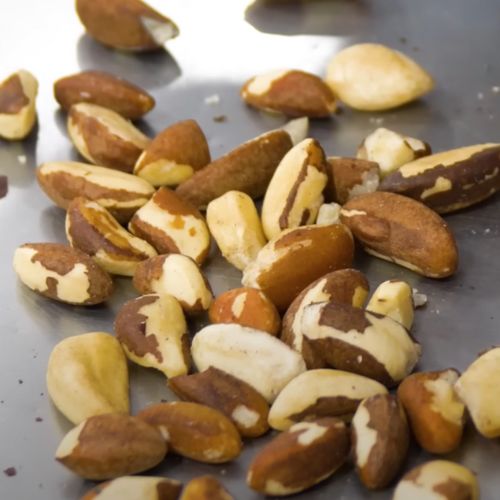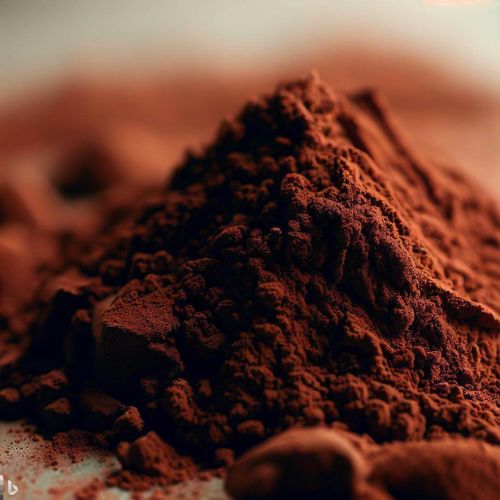Zinc is an essential nutrient that has a role to play in maintaining our immune health, DNA and protein synthesis, and testosterone production.
Unfortunately, our bodies are incapable of producing the mineral naturally — meaning that we must obtain it daily through either food or supplements. For that reason, I’ve identified and compiled a list of foods high in zinc and the benefits you can expect from the nutrient.
So, without any further ado, let’s get straight into it.
key findings
Why Zinc Matters?
From my initial research I found that zinc is responsible for the activity of over 300 enzymes in the human body. These enzymes aid our bodies in metabolism, digestion, nerve function and several other processes.
Zinc’s Benefits
Acts as an antioxidant
Zinc is a known antioxidant and anti-inflammatory agent. As an antioxidant, zinc’s role in your immune system is to scavenge the free radicals from the cells in your body.
Benefits to immune health
On top of that, zinc also provides benefits to your overall immune health by activating immune cells like T-cells and NK (natural killer) cells. These cells are responsible for raising our body’s defenses against harmful substances or invaders.
Aids in Protein Synthesis
A relatively lesser known benefit of zinc is that it also aids in protein synthesis. Its role in protein synthesis ensures that the nutrient is directly responsible for muscle growth as well as muscle strength.
How? Well, zinc speeds up the processes behind the synthesis of new proteins, which causes your muscles to grow and recover faster. Finally resulting in muscles with greater mass and strength.
Recommended Daily Intake of Zinc
According to the National Institute of Health, the daily recommended dosage of zinc for men over the age of 14 is 11 mg. While for women the daily recommended value (DRV) is 8 mg. I’d advise not going over this value as it may bring some adverse side effects including dizziness, nausea and even vomiting.
Top Zinc-Rich Foods
The best way to save yourself from a zinc deficiency is by consuming zinc-rich foods that cover the mineral’s DRV. On that note, here’s a list of foods high in zinc.
1. Meat
Red meat is one of the best sources of zinc that you’ll find. As a matter of fact, studies indicate that a 100-gram piece of ground beef contains 4.79 mg of zinc. Which is 43.5% of the DRV for men and 59.9% the DRV for women.
On top of that, this single serving also contains 20 grams of protein and a whole host of important nutrients like iron, vitamin Bs and creatine.

2. Oysters/Shellfish
Oysters contain probably the highest amount of zinc than any other food. One raw oyster (14 g) provides about 5.5 mg of zinc which is 50% the DRV for men and 62.5% the DRV for women. Plus, they’re also naturally deficient in calories, making them ideal for individuals looking to lose weight.
However, I’d advise against eating too much raw oyster meat, as consuming it in high quantities may put you at risk of bacterial infection.
3. Legumes
Chickpeas, lentils and beans all come under the umbrella of legumes. These foods are incredibly rich in protein and fiber. However, do they offer a good amount of zinc?

To answer your question, studies show that one 100g serving of cooked lentils contains about 1.27 mg of zinc. Which constitutes about 11.5% of DRV for men and 15.9% of the DRV for women. On top of that, legumes are also known for their high fiber and protein content.
4. Nuts
Nuts are quite an underrated source of zinc. Plus, almost all nuts provide fiber, good fats and a bunch of other vitamins and minerals to the human body.
Talking about their zinc content specifically, studies show that consuming nuts in 1-ounce (28.35g) servings can provide you with 14.9% of the DV of zinc for men and 20.5% of the DV for women.
However, don’t binge eat on nuts as they’re a high calorie food that can cause weight gain.
5. Seeds
If you’re trying to eat healthy, you must include seeds in your diet. Not only is it a great source of zinc, but eating them has also been linked with various health benefits including reduced cholesterol.
According to the U.S department of agriculture, hemp seeds in 30g doses (3 tbsp) provide 2.97 mg of zinc. Which when calculated, make up 27% of the DV for men and 37.1% of the DV for women.
In addition to that, seeds also supply your body with necessary minerals, vitamins, fibers and fats.
6. Dairy
Dairy products are well known for all the nutrients they provide. What you might not have known is that they’re also great sources of zinc.
Talking about cheese in particular, one slice (28g) of sharp cheddar cheese offers 1.05 mg of zinc. Which amounts to 9.5% of the DV for men and 13.1% of the DV for women.
1 cup of milk (244g) on the other hand offers a solid 1 mg of zinc. Which makes up 9.1% of the DV for men and 12.5% of the DV for women.

7. Kefir
Kefir like yogurt is never far behind in the discussion of healthy foods. Not only is it shown to support a healthy balance of bacteria in the gut, but it’s also rich in zinc.
For example, 1 cup (243g) of kefir contains 1.12 mg of zinc. Which makes up 10.18% of the DV for men and 14% of the DV for women.
Thus, including kefir in your daily diet can significantly improve your gut health and keep you topped up on zinc.

8. Dark Chocolate
I’m pretty certain that dark chocolate wouldn’t even be close to your top ten when it comes to zinc rich foods. Strangely enough though, dark chocolate contains quite a reasonable amount of zinc.
Just 1 bar (101g) of dark chocolate contains 3.34 mg of zinc. Which makes up 30.36% of the DV for men and 41.75% of the DV for women.
However, despite its high zinc content, I’d advise consuming dark chocolate sparingly due to its high calorie and sugar content.

Zinc and Bioavailability
Before you go hunting for the foods we mentioned, you should know something.
Your body’s cells sometimes can’t absorb all of the zinc a food provides. That’s because your cells’ ability to absorb the zinc being provided depends on each food’s bioavailability of the nutrient.
Meats generally have greater bioavailability of zinc due to their high protein content. However, consuming too much meat can put you at an increased risk of heart disease.
That’s why I’d advise keeping a healthy balance in your diet and consuming both plants and meats.
Lastly, you can increase the bioavailability of zinc in legumes by sprouting, soaking or fermenting them.
Final Thoughts
Zinc is the second most abundant trace mineral in your body, after iron. The mineral is present in all of our cells and aids in several key processes including our immune responses.
Making it even more important that we consume a steady amount of it in our diet. Thankfully, foods such as meat, shellfish and legumes contain a rich serving of the nutrient.
However, consuming too much of these foods can cause some undue side effects as well, so make sure you take a balanced diet. One that’s approved by your nutritionist.

